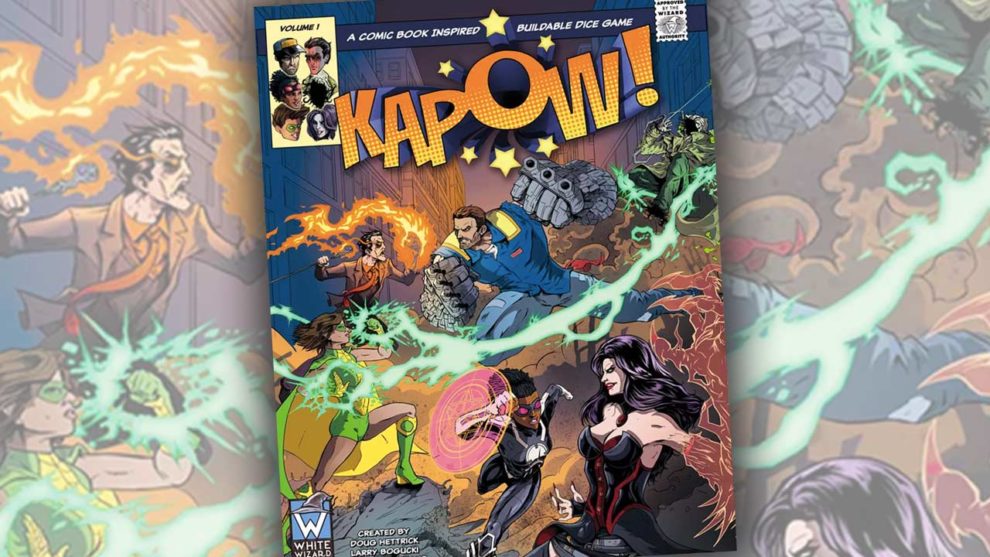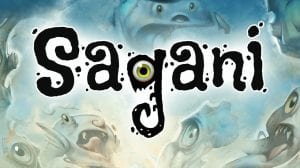Disclosure: Meeple Mountain received a free copy of this product in exchange for an honest, unbiased review. This review is not intended to be an endorsement.
The first known comic book appeared in 1897. Entitled “The Yellow Kid in McFadden’s Flats”, the “book”—like many other comic books that would soon follow in its wake—was just a collection of humorous comic strips that had appeared in other formats, most notably various newspaper publications. It wouldn’t be until 1933 that the world would see a comic book appear that contained 100% original material, entitled “Detective Dan”. As you can surmise, it was about a detective named Dan, a far cry from the superheroes we’re used to today. In fact, it wouldn’t be until “The Phantom”, published three years later, that anyone would think of placing a superhero into the format.
It’s hard to imagine an era where comic books weren’t synonymous with superheroes, but for four decades, that was the case. Now, we can’t avoid superheroes. They’re everywhere. They’re on our television sets, in our theaters, and part of our collective consciousness. And it’s no surprise they’re in our board games as well.
Overview
Meet KAPOW! Originally published in 2019, the game has been revamped and re-released by White Wizard Games for a 2023 audience. The new version of the game remains mostly the same as its 2019 counterpart, but with a few tweaks and balances made here and there. Most notably, the original version contained six supers: three heroes and three villains. Designed for two-player head-to-head action, the base game could be combined with another copy of the base game to enable a four-player team mode. In the new version, the game comes in two volumes. Volume 1, the subject of this review, contains the same six supers. But there’s a Volume 2 that introduces another six supers, each with their own unique personas and abilities, that can be combined with Volume 1 to enable the four-player mode. There’s even a solo mode included.
In KAPOW!, two players go head-to-head in an all out slugfest. In the base game, the players begin with twenty health, a handful of Trait dice, an Action die (with removable faces), a Player screen, a Player board, and a thirst for blood. The goal is simple: defeat your opponent.
The path you take to get there is not so simple.
Each round, the players secretly roll their dice and then assign those dice to various powers on their Player board. Then they lower their screens and carry out their actions in turn order. If a player attacks their opponent, then they deal damage to them unless their opponent had the foresight to defend themselves. After each player has had a chance to attack and/or defend, some post-combat effects occur, followed by a cleanup phase. Then, a new round begins. This continues until one person manages to deal enough damage to knock their opponent’s health down to zero, thus becoming the victor.
Of course, this is just a high-level overview of the game. If you think you’ve heard enough and just want to know what I think, feel free to skip ahead to the Thoughts section. Otherwise, read on as we learn to play KAPOW!
Powering Up
A game of KAPOW! is set up thusly:
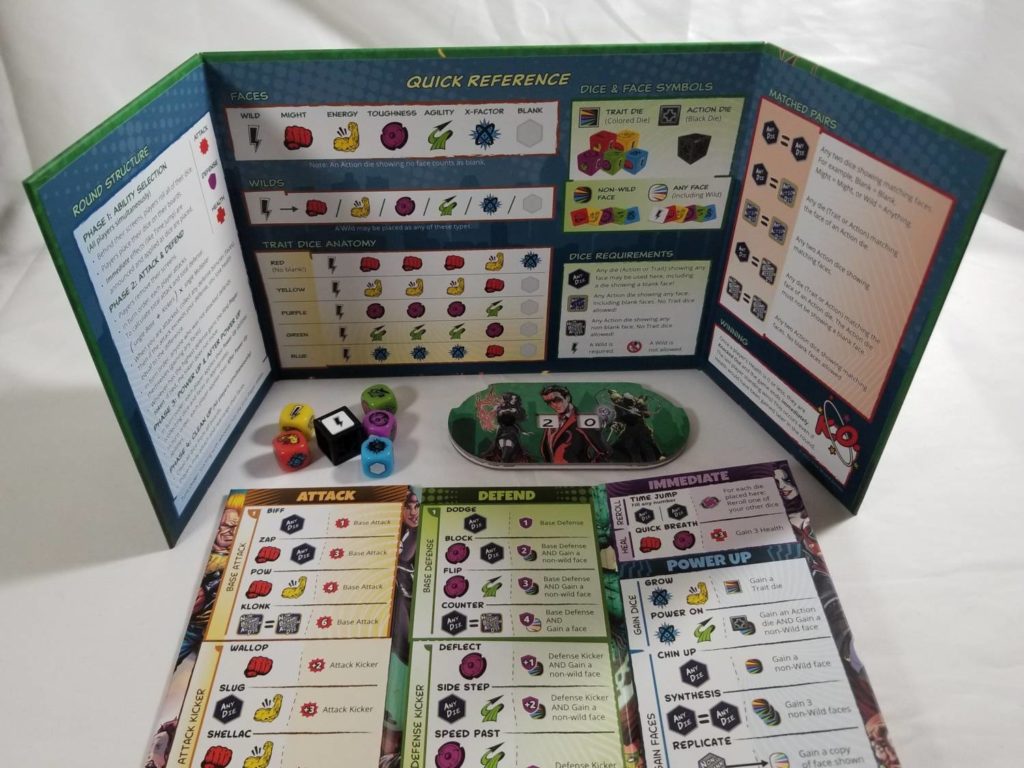
First, the players determine who’s going to play as the hero and who’s going to be playing the villain. Then, the players receive the appropriate Player screen and board along with a handful of dice and a Health tracker. If playing the base game, the players receive one of each Trait dice color along with an Action die with five blanks and a single wild die face. Their Health trackers begin at 20.
If playing the advanced mode, the players will receive a Character board. The Character board dictates the player’s starting dice pool, their starting health, and also outlines the chosen character’s unique abilities. In this review, I’ll primarily be focused on the base game.
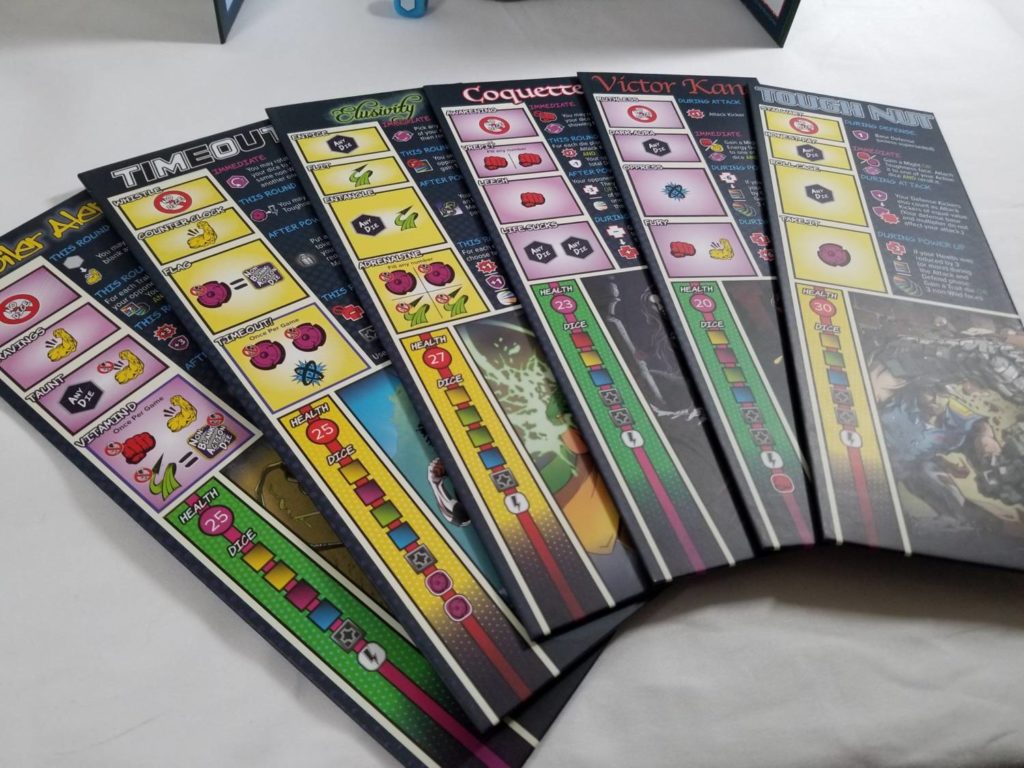
The Action dice are chunky, blank plastic cubes with recessed notches to hold the various die faces in place, of which there are six types: wild (white), might (red), energy (yellow), toughness (purple), agility (green), and x-factor (blue). These dice not only add a wow factor to a game that’s already got an attractive table presence, but they also bring a great deal of tactical depth with them as well.

After receiving their boards, dice, and die faces, the remaining dice and die faces are set aside as a general supply. Then, after deciding who will be the starting player and handing them the First Player token, you’re ready to begin.
Trading Punches
At the beginning of the round, the players put up their screens, secretly roll their dice, and then assign those dice to the various abilities shown on their Player board. Once both players have assigned all of their dice, the screens are lowered and then the various phases are carried out.
The abilities on a player’s board are broken down into several categories: Attack, Defend, Immediate, Power Up, and After Power Up. Each ability bears a description of what the ability does and is accompanied by a collection of icons. Covering these icons with matching die faces is how the ability is carried out.
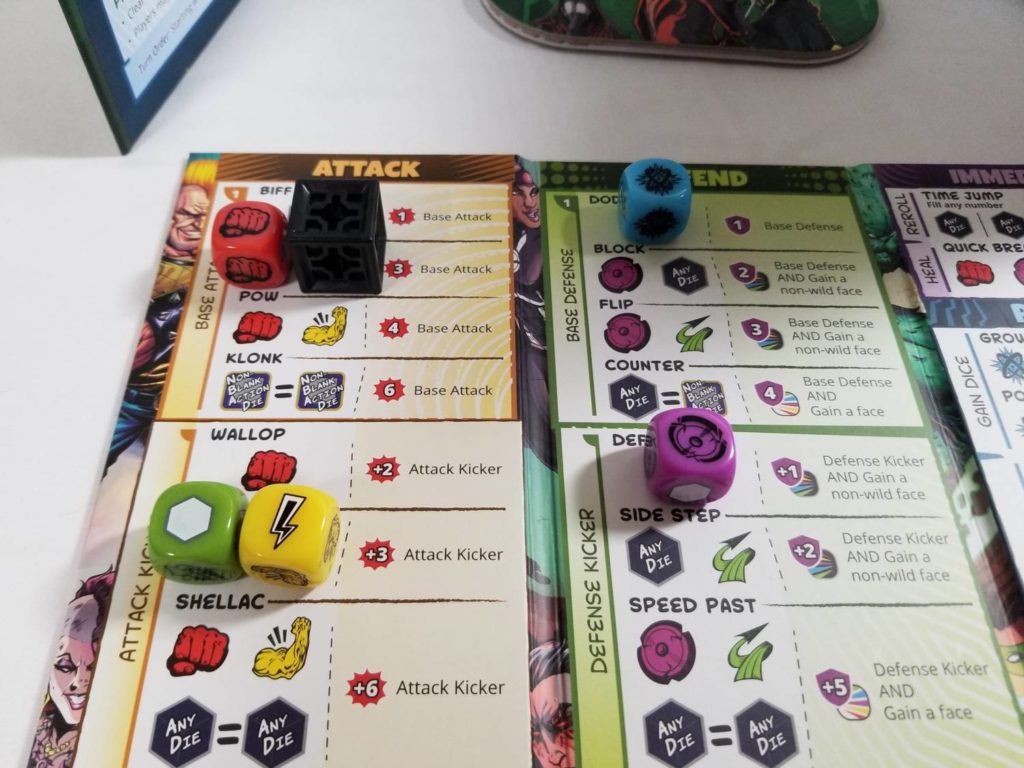
The only abilities that are activated prior to the removal of the screens are the Immediate abilities (which allow you to spend dice to reroll other dice or to heal 3 of your health). These must be announced as they are being carried out. Once placed, the dice on these abilities cannot be moved. This is not true for the other abilities. A player announcing their Immediate ability may change your decisions about what to do with your own dice.
Attack and Defense abilities are broken down into three categories: Base, Kicker, and Multiplier. While it is possible to assign dice to as many of these abilities as you wish, when it comes time to carry them out, you’ll only be able to carry out exactly one base and exactly one multiplier, but you can carry out any number of kickers.
The formula for determining your total Attack or Defense is as follows: (base + kicker) x multiplier. If you are attacked, you’ll compare your total Defense to your opponent’s total Attack. If their Attack exceeds your Defense, you’ll take damage equal to the difference. Otherwise, you were able to hold them off. And, it’s worth mentioning here that Attacks are carried out in turn order. So, it is entirely possible for one player to take out their opponent before their opponent has a chance to counter-punch.
The person who ended this phase with the highest Defense becomes the new First player. Unless, of course, someone lost all of their health. If that’s the case, the game’s over.
Licking Your Wounds
After the Attack/Defense phase is over, the players move into the Power Up phase. This phase is played out in turn order. In the base game, the players will choose between the same Power Up abilities. In general, these abilities are how players are going to acquire new Trait or blank Action dice, as well as the die faces needed to turn the Action dice into something useful, although many of the Defense actions also provide die faces as well.
Once each player has carried out their Power Up actions, After Power Up actions are taken in turn order. In the base game, these actions are all the same. The first two actions—Sucker Punch and Face Off—damage your opponent based on what they may have done in the Power Up phase. The last two—Adapt and New Plan—allow you opportunities to acquire more dice or different faces, respectively, if certain criteria are met.
Thoughts
If you’d told me several months ago that I would be sitting down to write a review of a dice-chucking game of all-up-in-your-face combat, I’d have told you that you were crazy. Anybody that knows me and my gaming tastes knows that I abhor dice-driven games due to their luck-reliant nature. And, anybody that knows me knows that I <insert word to indicate abhorrence on a monumental scale> games in which players are constantly attacking one another. Too much randomness makes me feel like the game is in control instead of me. And too much combat makes me feel icky about the way the in-game aggression often spills outside of the game. When I play a game with my friend, it is my fervent wish that they remain my friend when the game’s outcome is revealed.
So, it’s a wonder that I volunteered to take on KAPOW! I mean, it’s literally a collection of mechanics that I can’t stand. The only way that the game could be even more targeted to someone other than me would be if it also came with a bunch of unnecessary miniatures. But, giving the game a quick once over on BGG, there was just something about it that spoke to me. The ability to program and influence your own dice pool sounded an awful lot like deck/bag-building, and that sparked my interest. I was also drawn to the aesthetic. The game doesn’t shy away from its comic book influences. The theme is so well-ingrained that even the Player boards fold up like comic books. They’ve even got their own covers!

So, putting aside my misgivings about its nature, I volunteered to take KAPOW! on. I expected that I was probably going to hate it, but I had high hopes that it would prove me wrong.
Several weeks passed with nary a peep. Just when I was beginning to think the offer to review the game had been rescinded, it arrived on my doorstep. Any indecision I may have harbored, any subconscious hopes that I wouldn’t have to subject myself to it after all, were dashed. Like it or not, KAPOW! was here, and I had an obligation to play it.
So, I wasted no time in rustling up a friend who was game to give it a go. After briefly running through the rules with him, he selected to play the villain, leaving me with the hero, and we got down to business. Forty minutes later, we were finished. My victory was swift and merciless, and my view of dice-driven combat games was shattered. KAPOW! had landed a heavy blow, and I wasn’t getting back up from it.
The thing I hadn’t expected from KAPOW!—the thing that really impresses me— is just how much of a chess match it is. Hiding behind your screen, you’re tasked with choosing between two things, the things you want to do and the things you can do.
You want to damage your opponent so that at least some of the damage gets through unblocked. You want to add dice to your pool so that you’ve got more options available in future turns. You want to block whatever your opponent is going to throw at you.
But you’re limited by the dice. The dice ultimately determine what you can do. Sometimes, what you can do and what you want to do are synonymous. But, more often than not, they’re at odds with one another. And that’s where KAPOW! starts to get interesting.
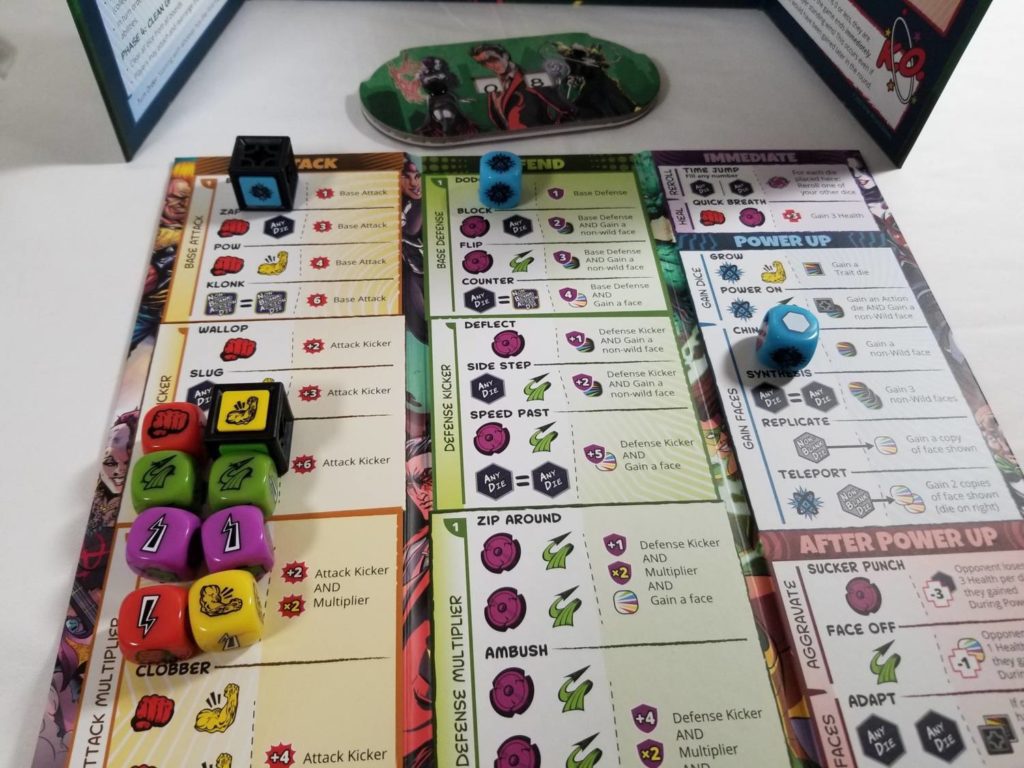
I know that my opponent wants the same things that I do. So, maybe I should put everything I have into defense this turn, knowing full well that they’re going to attack me. Then again, maybe they’ll think that I think they’re going to attack me and they won’t waste any dice on Attacks after all. If that’s the case, they’re not likely to waste any on Defense either. So, maybe they’ll be trying to acquire more dice and more faces from the Power Up step. If that’s the case, maybe I should ensure that I put some dice in the After Power Up steps to damage them when they least expect it. Then again, maybe they’ve already considered that possibility and are hoping that I’ll spend my limited resources on ultimately fruitless After Power Up actions and will Attack me after all.
This type of guessing and second-guessing and trying to prioritize your responses to what you think your opponent is likely to do is the heart of KAPOW! This behind the screens decision making is where the real action is. This is where you are at the controls. Once the screens come down, you’re just along for the ride.
This behind the screens action is also the game’s greatest weakness… potentially. There’s absolutely nothing in place to stop a player from cheating. While I trust the people I’ve played KAPOW! with, it’s not hard to imagine a world wherein some ne’er-do-well without any scruples would fudge their dice. It’d be easy to get away with and utterly undetectable. So, buyer beware. If you play games with people that have the propensity for cheating, you can expect to lose plenty of games of KAPOW! to them.
Thankfully, that’s not something I have to worry about (I hope). The games I’ve played have been very enjoyable, much to my surprise. The randomness of the dice doesn’t have as much of a deleterious effect as I’d initially feared. It’s the framework for the decision space rather than the means of actually making the decisions. That makes all the difference.
It’s because of that, the aesthetics, the theme, and the ease of play that, like a villain that just doesn’t know when they’re beaten, I’m going to keep coming back for more.


